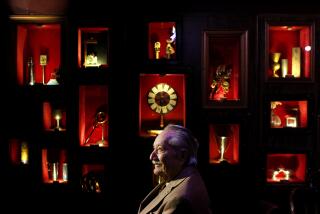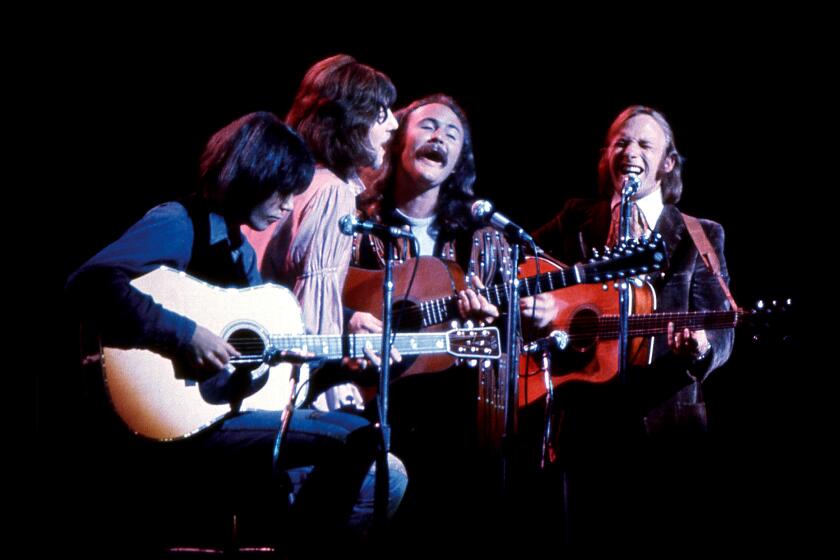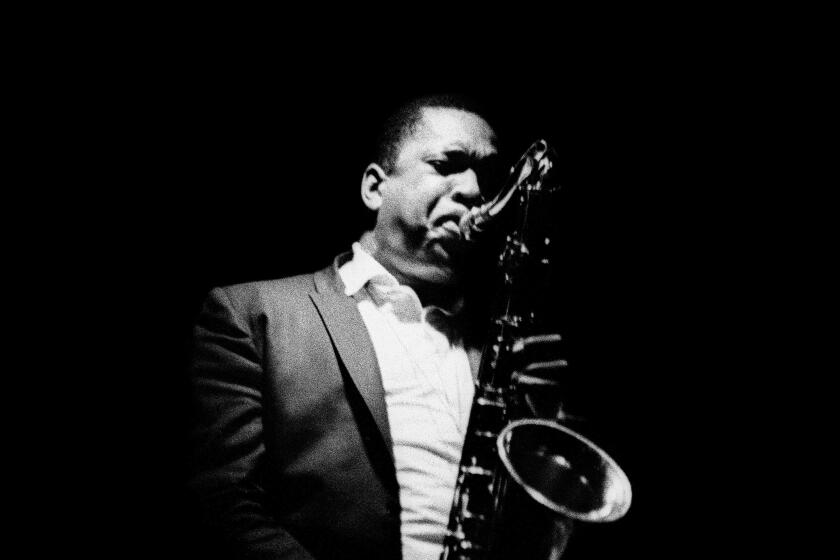Morton Minsky, Last of the Burlesque Brothers, Dies
- Share via
Morton Minsky, the youngest and last of the four brothers whose bawdy burlesque houses became a gathering place for both the licentious and the literary of New York City, is dead of cancer.
Minsky, whose memoir, “Minsky’s Burlesque,” published last year, aroused renewed interest in one of the nation’s earliest training academies for both comics and strippers, was 85 and died Monday at his Manhattan home.
He joined brothers Abraham, Billy and Herbert in 1924 after attending New York University and took over one of the then six Minsky burlesque houses, the former Little Apollo Theater, on 125th Street. There and in the other Minsky houses, he helped oversee the ribald entertainment that featured such comedians as Phil Silvers and Bud Abbott and Lou Costello and such ecdysiasts as Georgia Sothern, Ann Corio, Margie Hart and Gypsy Rose Lee.
Revues Hailed
Cheering on those then beginning performers were John Dos Passos, Robert Benchley, George Jean Nathan and Conde Nast.
Poet Hart Crane once hailed such Minsky revues as “Julius Teaser” and “Panties Inferno” as “outspoken buttocks in pink beads.”
Even critics like Brooks Atkinson and A.J. Liebling, who normally confined their writings to things theatrical and folkloric, expressed their fondness for the Minsky spectacles in print.
At a time when women were still wearing bathing suits that reached to their knees, the Minskys earned hundreds of thousands of dollars, advertising their off-color gags and scantily clad girls as “Not a Family Show.”
Reform-Minded Mayor
Although the degree of exposure shown on stage paled by modern-day standards, the reform-minded Mayor Fiorello La Guardia eventually closed down the theaters in 1937 by refusing to renew their licenses.
That same year, testifying before a congressional committee, Morton and Herbert Minsky had defended stripping as a typically American art requiring rigorous training.
La Guardia later officially banned the words “burlesque” and “Minsky” in advertisements and on marquees.
By that time newer comics like Red Buttons and Jack Albertson had begun trying out their double-entendres on a fresh generation of patrons.
Morton Minsky, who found the closure a bitter pill in later years, wrote a letter to the New York Times in 1981 that blamed La Guardia’s political ambitions rather than a sense of moral outrage for the end of his entertainment empire.
‘See What It Got Us’
“We tried to elevate burlesque and see what it got us,” he said late in life.
The Minskys claimed that they provided well-paying jobs to uneducated chorus girls. Some, such as Corio and Lee, made as much as $2,000 a week taking off their clothes in what Billy Minsky called “seven minutes of sheer art.”
A 1927 police raid of one of the family’s theaters, accompanied by 12 arrests, a riot and a summons served on brother Abraham for smoking a cigar backstage, became the basis of the 1968 movie “The Night They Raided Minsky’s,” starring Jason Robards, Bert Lahr, Forrest Tucker and Britt Eklund.
Morton Minsky was a researcher for the film.
Minsky later joined the real estate business, heading a division of Daniel A. Brener Inc. that specialized in motion picture theater sales and leasing.
He is survived by his wife, Ruth.
More to Read
The biggest entertainment stories
Get our big stories about Hollywood, film, television, music, arts, culture and more right in your inbox as soon as they publish.
You may occasionally receive promotional content from the Los Angeles Times.










